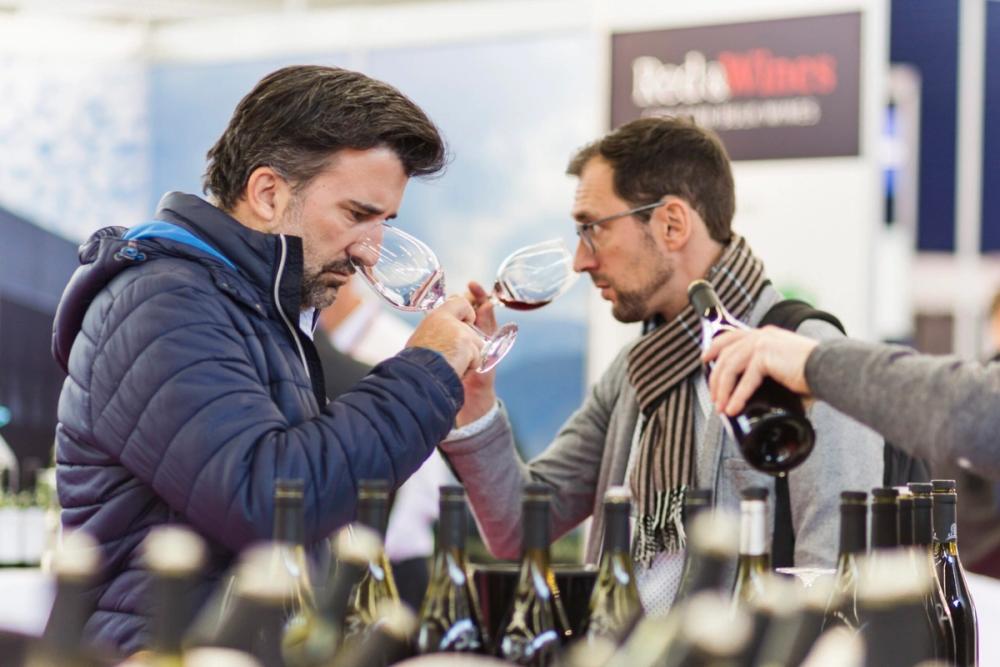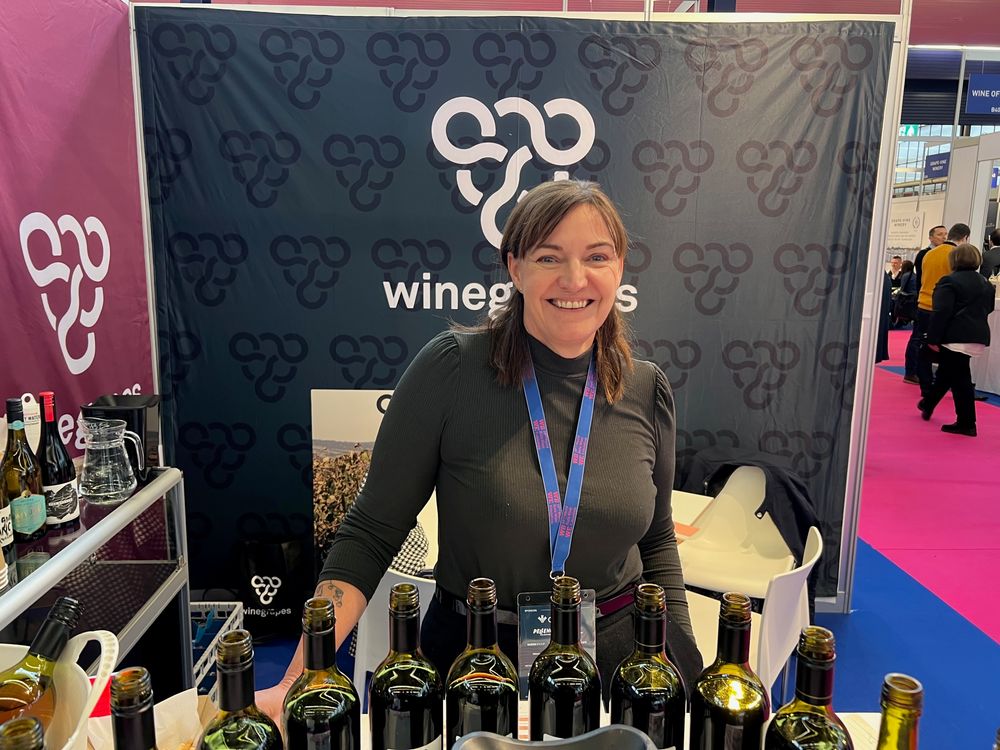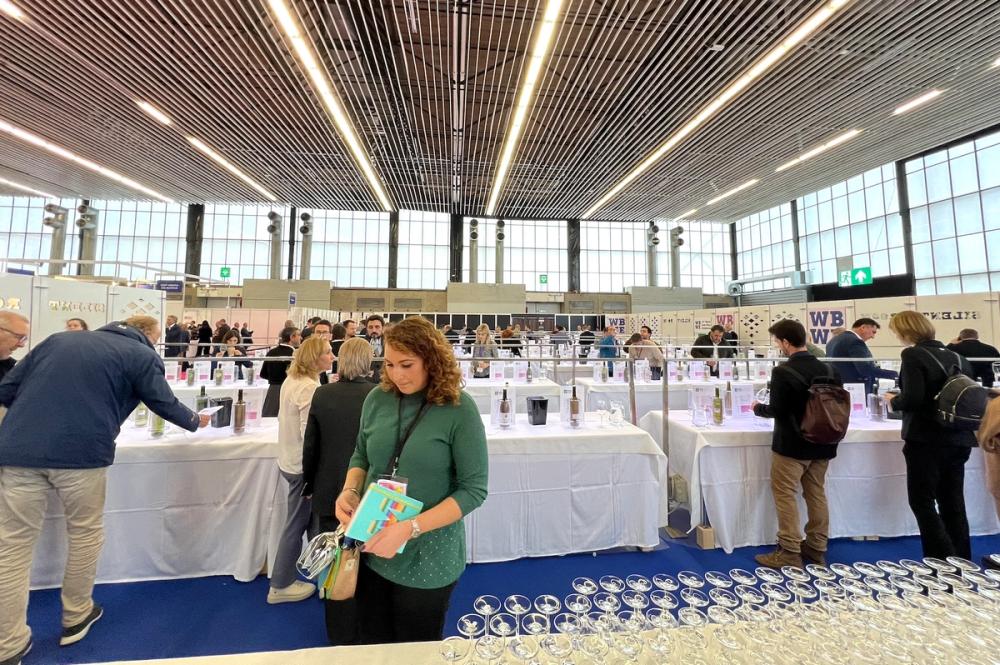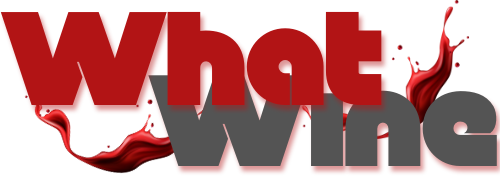For many producers and buyers, last week's World Bulk Wine Expo was the first time they had been in the same room together since 2019. Richard Seidel says they would all have found a very different market to be in.
There was a strange atmosphere at the World Bulk Wine Expo this week. It's as if everyone walked into the filming of an episode of “First Dates” and didn't quite know what to do with themselves.
There were too many producers and buyers to deal with each other, they were just waiting for the other to make the first move. For many, this was also the first time they had ventured back into the dragon's den on the WBWE trading floor since before Covid, and it was as if they had to relearn the rules of engagement. The big obstacle was where did you start your negotiations when the price of grapes was not the most important factor?
Covid, the subsequent impact on the supply chain, and the knock-on effect of rising dry goods costs, rising inflation, and glass and packaging shortages, has meant that everyone has had to find new ways of doing business with each other. Or do no work at all.
There was a very different business atmosphere at WBWE 2022 on the back of all the supply chain issues and cost increases across the wine industry.
The fear is if you agree to a deal, price and contract at the show, how credible will it be in three to six months? The worst trading conditions came at a time when the market was flooded with wine, but buyers were becoming increasingly anxious about purchasing it.
John Woodriff, sales director at Origin Wine, explained that for many years buyers and producers alike had looked to bind each other to long-term commitments on the price and volume of wine they were buying and selling.
These were the foundations on which the global wine industry was built.
An unprecedented market
“We're all used to annual deals. That's what everyone grew up with in the trade,” he added. But all of that has gone away due to the increase in dry goods and packaging costs, he added.
That's why WBWE has become such an important show. The only time of year when the majority of wholesale wine is traded in one place. If you miss it, you risk not getting quantities of certain wine varieties and regions for the next 12 months.
It's an unusual situation for buyers to come to WBWE looking to get pricing, volume and producer commitments, said Guy Smith, director of Frederick's Wine Company, a UK wine importer that works with a number of producers, including Winegrapes Australia and Antigua Bodega in Argentina. Not wanting to give it to them.
The biggest stumbling block in doing business is the constant shortage of bottles. Which means that in some markets there is currently no glass at all, and what there is comes in one size and shape, especially for those looking to source from France, Italy and Spain. All come with a “like it or break it” attitude from the big glass manufacturers. This means that both buyers and sellers have to negotiate with one arm behind their backs, without knowing what the costs and terms of this agreement will be in a few months.

There was plenty of wine to taste, but how much wine was purchased from WBWE
Which led to an embarrassing and unprecedented stalemate at WBWE last week. As Southern Hemisphere producers, in particular, were desperate to close deals and prepare their tanks for the upcoming 2023 harvest in the first quarter of 2022, buyers were willing to play the long game and “see what happens” going forward.
Tearing up long-term contracts
The fact that major UK bottlers now change their prices on a quarterly basis means it has a direct impact on the margins of producers, suppliers and retailers up and down the supply chain.
“That makes it really difficult. How many times can I go back to our customers and ask for another price increase?” Woodriff said.
But in many cases they are. At least for now. Even large retail buyers realize they have to, said Inge Stretmans, a wholesale wine consultant who works in the Belgian retail market, during a panel discussion analyzing the pressure on buyers and what they are looking for.
Torbjørn Rolander, brand manager at Enjoy Wine and Spirits, a Swedish drinks wholesaler, agrees and says buyers have to be more flexible now than in the past. Especially when working with partners who want to establish long-term relationships with them.
Stuart Bowman Hood, director of Fredericks Wine, added: “Talk about changing long-term contracts has never happened before.” “We have to have those difficult conversations. But retailers understand that.
Especially when prices for some glass containers rose 30% earlier in the year and are rising another 40% now.

Winegrapes Australia's Paula Edwards says buyers are now looking to commit to buying wine “when they need it”.
Buyers are also “stepping back” and looking to see how the market responds to all external forces before committing to large quantities, Winegrapes Australia managing director Paula Edwards said. “They know they can come back and buy when they need to, and see what they can get if they hold back,” she explained.
She said this is the first time she has been able to return to WBWE since 2019 when the world was a completely different place. She said it was a good time to come back, re-engage with the market again, and in some ways it was like starting over and getting a “clean slate” with some clients in how they did business together.
She said it was “ideal” to be able to find a way back into the UK retail market. “This is a big goal for us.”
Australian problems
The long faces of Australian producers and brokers at the World Bulk Wine Expo in Amsterdam this week told a story of having loads of wine to sell and a worrying lack of buyers willing to accept it. Even at prices as low as 80 Australian cents per liter or less.
Many brokers came to the show with one price in mind, and quickly realized they would have to lower that price significantly to attract interest.
The fallout from the collapse in the Chinese market was there for all to see as Australian players looked to find ways to sell excess wine and free up space in tanks and cellars for the 2023 harvest.
“It's a tough place to be in right now,” said Peter Flewellen, export sales manager at CW Wines. “We have pressure on capacity and space.”
Edwards said she's “willing to discount” if it means moving wine out of the tanks. For example, a wine that you thought could sell for A$2.35 per liter was likely to be closer to A$1.15.
CW Wines hopes to get business from all over Europe, especially in Sweden and Scandinavia, Flewellen said. “We're ready to go and ship our wines. We're here to see what buyers are looking for. We have more inventory than we used to have that's for sure.”

WBWE was the first time since 2019 that many buyers and producers had met in person
Even the lure of very cheap prices from Australia is not enough to persuade some buyers to bring some of their supplies back Down Under as many of these cheaper prices need to be offset against much higher dry goods and freight costs, and uncertainty remains over shipping times and how long it will take to release these wines into Market.
“The market has definitely slowed down due to Covid, supply chain issues and shipping,” Flewellen said.
Trade tensions
It is also clear that there is an underlying tension between European buyers and the UK, in particular, who feel Australia has been too quick to turn its back on the markets that helped make Australia's name around the world in favor of China. Now China's dream has turned into a nightmare, they are not just ready to reopen their markets, especially since they have spent the last few years sourcing better value wines from other countries.
They also question how serious Australia is about returning supplies to its traditional markets, because if China drops its tariffs and opens its customs and borders to Australian wine, many of its producers will quickly jump back on the Chinese bandwagon. once again.
Flewellen added that the frustration most Australian players have in WBWE is that there are no actual increased tariffs on bulk wine to China, it's just that they can't get their wine through customs. Edwards fears the Chinese market “is not coming back anytime soon” despite political moves in Australia to make that happen.
A fact supported by Frances Adamson, the governor of South Australia, who assured buyers during a separate trade discussion in London last week that any potential change in China's tariff status was realistically good for five years.
Instead, several Australian players, including Winegrapes Australia, were doing a lot of business at home and in New Zealand, and Edwards was hopeful some of the brands and business being done there could be picked up in other European markets in Europe as well.
Whatever happens, producers are looking to squeeze in the 2023 crush as they still have plenty of wine in the tanks. Winegrapes Australia expects to crush about 1,500 tonnes compared to 3,000 tonnes in 2016.
Winners and losers

WBWE allows buyers and producers to start directly in the wine trade
But in the world of wine, where there are losers, there are also plenty of winners.
Woodriff said South Africa had certainly enjoyed getting business from the significant shortage of Sauvignon Blanc in New Zealand over the past two years.
He added that what was particularly encouraging was that many of the key customers who had switched their supplies to South Africa were now returning for a second product, and that it was bringing something new to the market that customers and consumers loved.
“There is also a good market for red wines from South Africa as well. “We are seeing good demand and volumes for dry red wines,” he added, resulting in “fairly stable pricing” for red and white wines across the board.
Another factor to add to the mix is a change in UK duty rates in the first half of 2023 which will mean higher rates for high-duty wines, which will likely see a 35 to 45 cent increase on average, Guy Smith said. A liter of Argentinian Malbec and more. The pressure on wines, especially from the Southern Hemisphere, is always higher at 13.5% to 14%.
To that end, it was notable how many non-alcoholic distributors and operators were present at this year's WBWE, with time set aside during its conference for talks, and a taster of the role non-alcoholic wines could play in the future.
WBWE 2022 can be considered a landmark event in the current history of the wine industry. A time when the true picture of what is really happening in boardrooms and negotiating rooms around the world was revealed. That was also when the old rules of trading were torn up and new ones were written before your eyes.
To learn more about WBWE, go to its website here. This is an expanded and revised article that was first published on VINEX, the trading platform for bulk and bottled wine.


